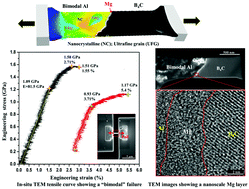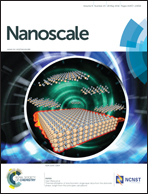Deformation of a ceramic/metal interface at the nanoscale†
Abstract
The mechanical response of heterophase interfaces has attracted substantial attention in recent years. Here, we utilized an in situ transmission electron microscopy (TEM) technique to isolate an individual nanoscale ceramic/metal interface and characterize its nanomechanical response. The interface, at which there was a Mg-rich segregation nanolayer between the single crystal ceramic (B4C) and the polycrystalline metal (Al alloy, AA5083), was determined to have a bond strength greater than 1.5 GPa. Bimodal failure and metallic grain rotation occurred in the metallic region, allowing the interface to accommodate a deformation strain of 5.4%. The roles of elemental segregation and nanoscale dimensions on interfacial debonding mechanisms are discussed.


 Please wait while we load your content...
Please wait while we load your content...